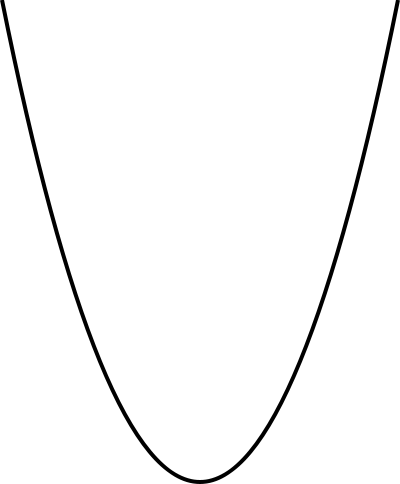For starters, what are quadratics for one thing? Well, quadratics are equations of a second degree polynomial, which means that it's highest exponent is 2. The equations are written in the form of ax² + bx + c = 0. This means that a, b, and c are the constants and a is NOT equal to 0. And once all terms are on one side and a, b, and c are in order, the equation will be written in standard form.
Ex.
2x² + x = 5 not standard form
2x² + x + 5 = 0 standard form
Now, on to graphing functions since the basics are out of the way and you know what a non-standard form and a standard form quadratic function. So anyway, when you graph a quadratic equations, they make parabolas, which lookie like-a this:

And the vertex can either be in one or two places:
Wnen a < 0, the graph will look like the one on the left
When a > 0, the graph will look like the one on the right
If you wanna see some para-bola examples, clickie this little link here.
*~♥~*Finding the Vertex*~♥~*
The vertex is an ordered pair (x,y). The x-coordinate of the vertex can be found by using the equation -b/2a, and the y-coordinate can be found by substituting the x-coordinate into the given equation. It's fairly simple really. Here, let's do a few.
Ex.
y = x² + 6x = 5 Now let's find the vertex shall we!
a = 1 b = 6 c = 5
x-coordinate = -6 / 2a, which = -(-6) / 2 (1).
6 ÷ 2 = 3
Now, substitute 3 for x...
y = (3)² - 6(3) + 5
= 9 - 18 + 5
= -4
Which brings you to the final answer of (3, -4) ! Wasn't that a slice of pie?! Now another one.
Ex.
y = x² + 8x + 15 Find the vertex
a = 1 b = 2 c = 15
x-coordinate= -b / 2a
x = - (-2) ÷ 2 (1)
= -8 ÷ 2
= -4
And the substitution...
y = (-4)² - 8(-4) + 15
= 16 - (-32) + 15
= 16 + 32 + 15
= 63
And the final answer is (-4, 63).